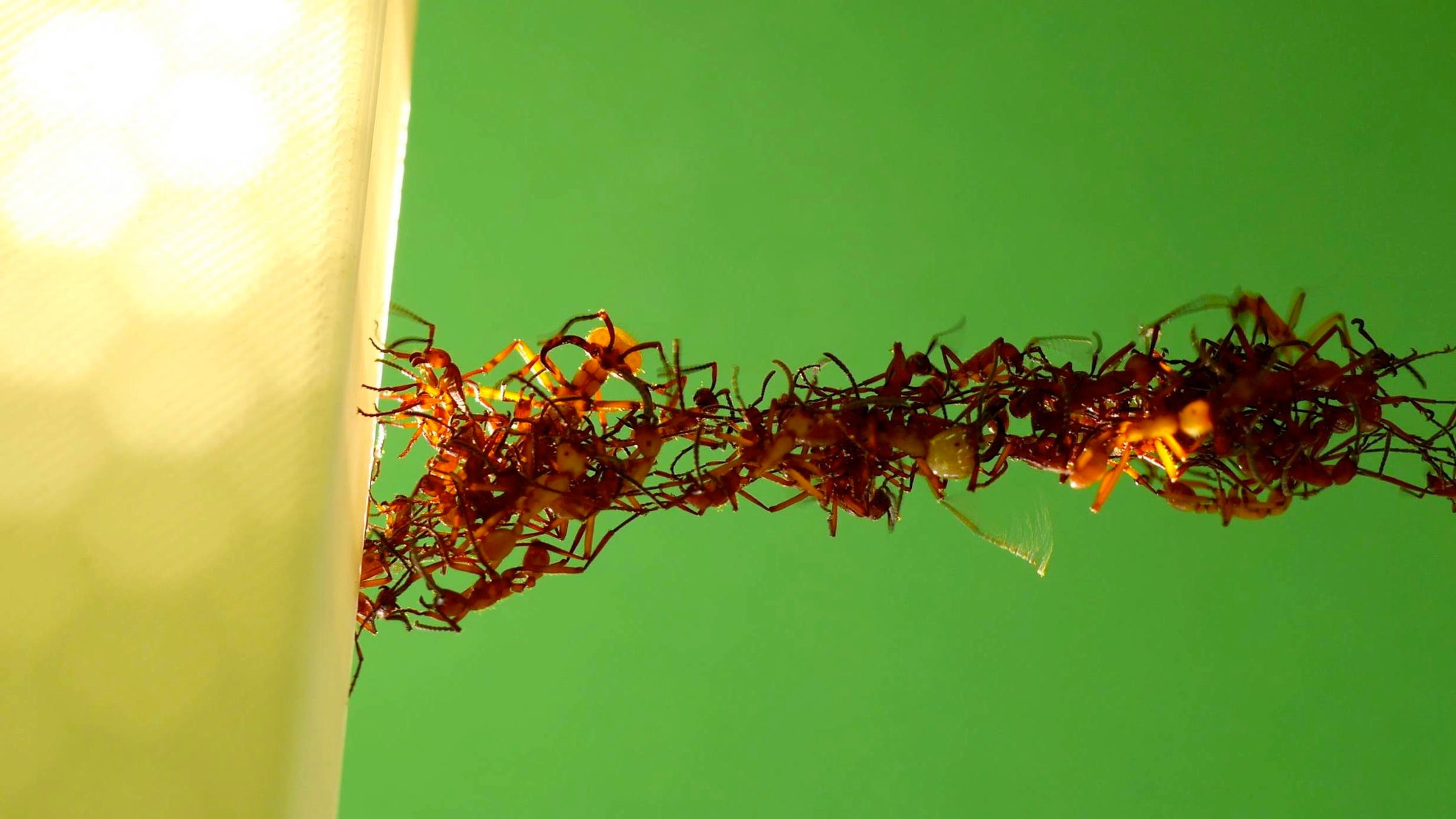Jersey scientists probe mystery of army ant ‘living’ bridges
Listen
Researchers report that the "living" bridges army ants build with their bodies are more sophisticated than scientists knew. The ants assemble with a level of collective intelligence that could provide new insights into animal behavior and help in the development of intuitive robots that can cooperate as a group. (Photo courtesy of Matthew Lutz
In the rainforests of South and Central America, roving colonies of predatory army ants form trails hundreds of meters long, with soldiers moving upwards of five inches per second. It’s a fast-paced lifestyle with nearly daily pillaging of fellow ant species for food. But these army ants aren’t just thugs of the insect world. They’re also master builders, capable of forming bridges with their own bodies that extend for more than a foot and are beautifully dynamic, responding in real time to changes in the environment.
How are these mini architectural marvels possible, and what conditions dictate their creation? For the first time, scientists have studied these “living” bridges quantitatively, and have found that the army ants are unwittingly acting as savvy economists, maximizing the benefits and minimizing the costs of construction for the entire colony.
“We realized that the ants were kind of trading off the benefit of creating a shortcut with the cost of having too many ants locked up in a bridge,” said Princeton ecology graduate student Matthew Lutz, who was an author of the study.
The team traveled to Panama to study the insects in the wild, where they observed hundreds of thousands of ants in a single colony work to quickly bring back food to the nest. The scientists then inserted their own obstacles to trigger the ants’ bridge building and took videos of the insects’ behavior. In one key experiment, the researchers introduced a V-shaped hinge. The ants quickly began assembling a small bridge to shorten the total path, and made adjustments to move the bridge further and further to the middle of the V.
“Even if it’s a distance of only a few centimeters,” explained Lutz, “when you’re talking about so many ants, there’s a lot of energy savings.”
But the ants stopped their bridge migration before reaching the shortest and most direct path. Here, said Lutz, is where the bridge became too ‘expensive.’ The shortcut might save on energy, but it took too many players out of the main task of collecting and transporting food.
The results, which were published in the journal PNAS, begin to clarify how ants, despite having small brains, are able to create complex designs — and point to ways that humans can learn from the social species.
“There’s no ant smart enough to plan these kind of structures,” said Simon Garnier, an assistant professor at the New Jersey Institute of Technology in Newark, and co-author of the study. “There’s no architect in the colony.”
Instead, he said, the individual ants are just following simple rules, albeit ones shaped by millions of years of evolution. For example, the team believes the signal to begin bridge construction is touch-based. If an ant hits a gap and soldiers begin to pile up behind her, she “knows” to plug the gap. She will then stay there until she no longer feels traffic over her body.
As Garnier put it, the ants are “just little automatons, or robots, executing rules in each given situation that are perfectly adapted to their environment.”
Such rule-based living, of course, is well suited for actual robots. The researchers are now working with two robotics teams to apply their findings about self-organization to machines. One future possibility, Garnier suggested, is a swarm of tiny robots that can automatically detect and temporarily fill in potholes or other defects in our infrastructure.
WHYY is your source for fact-based, in-depth journalism and information. As a nonprofit organization, we rely on financial support from readers like you. Please give today.



